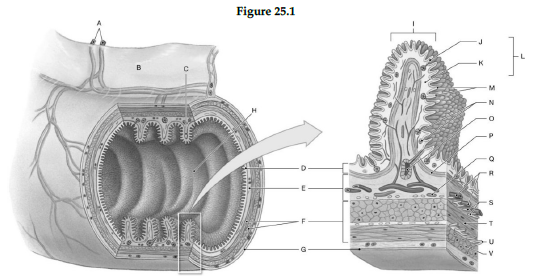Using the figure below, identify the labeled part.

1) Label A: ______________________________
2) Label B: ______________________________
3) Label C: ______________________________
4) Label D: ______________________________
5) Label E: ______________________________
6) Label F: ______________________________
7) Label G: ______________________________
8) Label H: ______________________________
9) Label I: ______________________________
10) Label J: ______________________________
11) Label K: ______________________________
12) Label L: ______________________________
13) Label M: ______________________________
14) Label N: ______________________________
15) Label O: ______________________________
16) Label P: ______________________________
17) Label Q: ______________________________
18) Label R: ______________________________
19) Label S: ______________________________
20) Label T: ______________________________
21) Label U: ______________________________
22) Label V: ______________________________
1) Mesenteric artery and vein
2) Mesentery
3) Plica
4) Mucosa
5) Submucosa
6) Muscularis externa
7) Serosa (visceral peritoneum
8) Lumen
9) Plica
10) Mucosal epithelium
11) Lamina propria
12) Mucosa
13) Villi
14) Mucosal glands
15) Submucosal gland
16) Muscularis mucosae
17) Lymphatic vessel
18) Artery and vein
19) Submucosal plexus
20) Circular muscle layer
21) Myenteric plexus
22) Longitudinal muscle layer
You might also like to view...
A shallow groove on the surface of the cortex is called a ________
A) gyrus B) furrow C) fissure D) sulcus
Vitamin ____ is necessary for vision, bone growth and maintenance of epithelial cells
a. A b. K c. B1 d. B12
Phospholipids are important components of the plasma membrane. What does "B" represent on the diagram?
A. phosphorus B. oxygen C. nitrogen D. polar (hydrophilic) region E. nonpolar (hydrophobic) region
Which type of lung cancer originates in the bronchial epithelium?
A. Adenocarcinoma B. Oat cell carcinoma C. Squamous cell carcinoma D. None of these are correct.